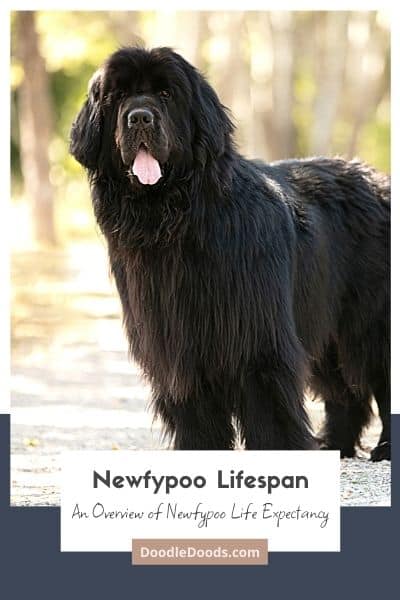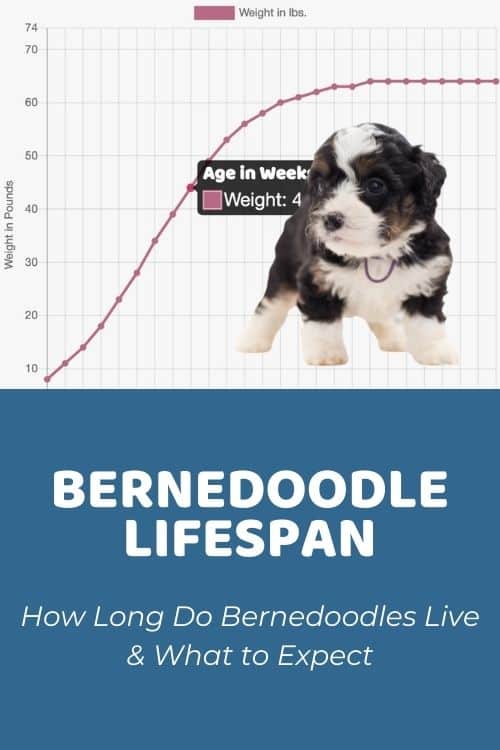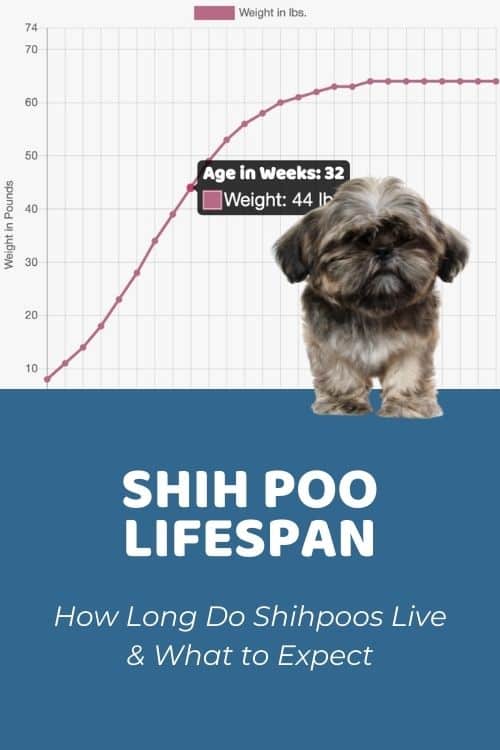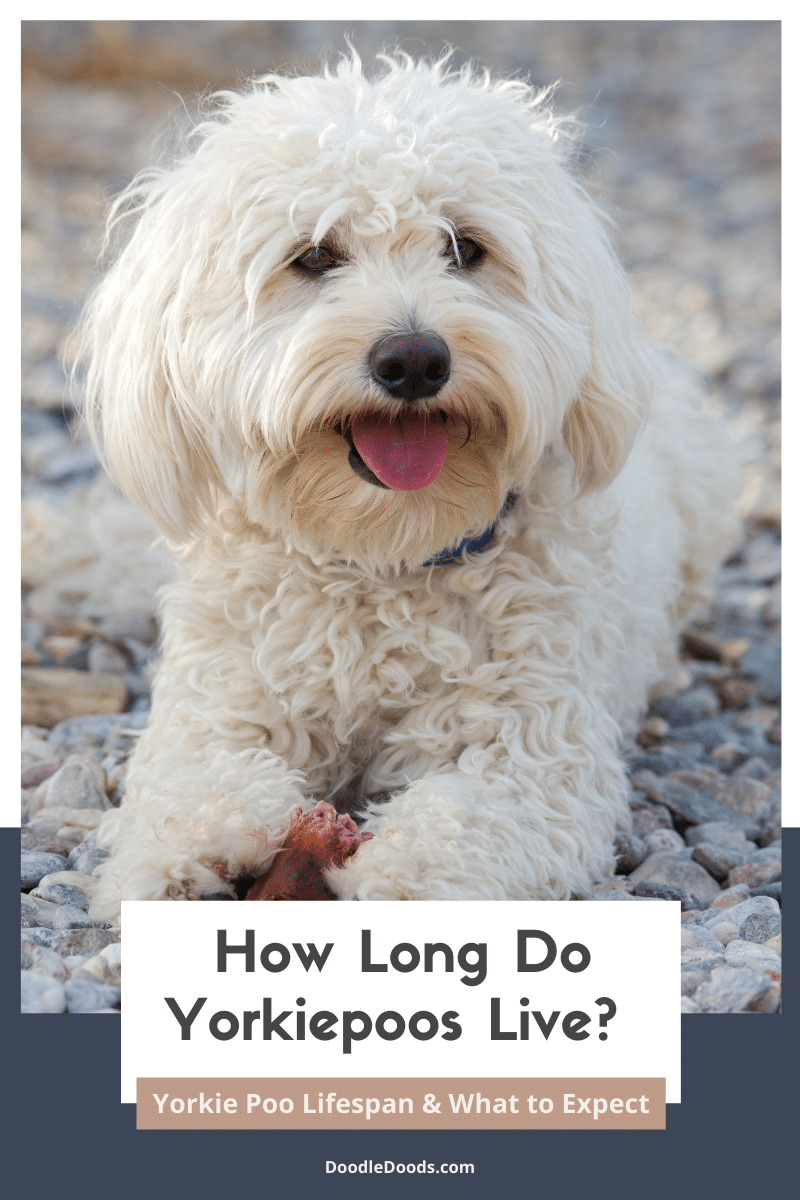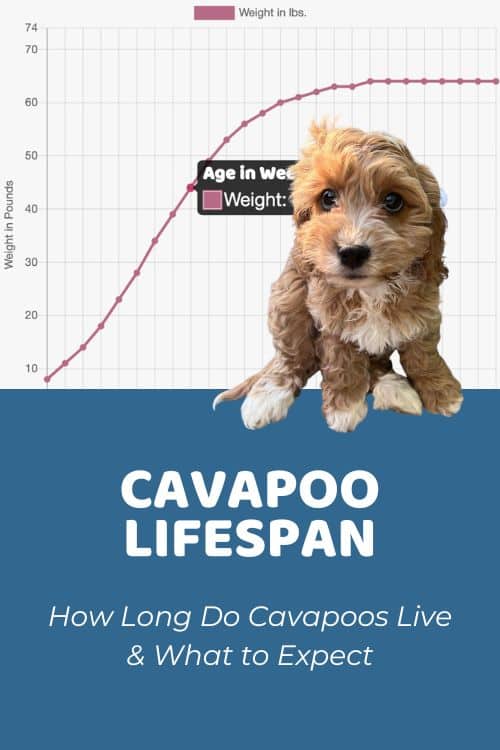If you have a Sheepadoodle or plan on adopting one, you’re likely curious about the Sheepadoodle’s lifespan. How long do Sheepadoodles live on average? What affects the Sheepadoodle’s life expectancy? And how can you extend your Sheepadoodle’s lifespan? In this article, we’ll answer all of your questions surrounding this topic. We’ll also offer some tips for how you can help your Dood live a long and healthy life. Let’s get into it.
Table of Contents
- Sheepadoodle Lifespan: How Long Do Sheepadoodles Live?
- Factors That Influence The Lifespan Of A Sheepadoodle
- Sheepadoodle Lifespan: Life Stages Of A Sheepadoodle
- Common Signs Of Aging In Sheepadoodles
- Common Health Problems In Sheepadoodles
- How To Extend Your Sheepadoodle’s Lifespan
- Lifespan Of A Sheepadoodle: Frequently Asked Questions
- Sheepadoodle Lifespan: Final Thoughts
Sheepadoodle Lifespan: How Long Do Sheepadoodles Live?
The Sheepadoodle is a cross between the Old English Sheepdog and Poodle. Like other Doodle breeds, these pups come in all shapes and sizes, coat types and patterns. We have the largest of them all – Standard Sheepadoodles. Then there are slightly smaller Mini Sheepadoodles, and the tiniest of them all are pocket-sized little Toy Sheepadoodles.
Like its highly intelligent Poodle and Old English Sheepdog parents, the Sheepadoodle has been blessed with the smarts and the wits. The Sheepadoodle is known for its sweet nature and calm mannerisms. However, they’re definitely not boring Doods, as they’re also quite playful and energetic. These Doods are all about playing fetch, swimming, going on hikes, and doing whatever outdoor activities they possibly can.
Of course, we cannot forget the main appeal of the Sheepadoodle, which is its low to non-shedding coat. Thank you, Poodle genes! Still, this isn’t the only benefit that comes with this crossbreed.
With hybrid breeds like the Sheepadoodle, there’s an added bonus that not many know about. Crossbreeds are thought to benefit from something called hybrid vigor. Hybrid vigor indicates that hybrid breeds are generally healthier than their purebred parents.
To put it simply, hybrid vigor indicates that crossbreeds usually inherit the best traits from their parents. Meanwhile, there’s a much smaller chance of inheriting breed-specific health conditions, since the puppies’ genetics are much more varied.
So, how long do Sheepadoodles live? The average Sheepadoodle lifespan ranges between 12 and 15 years. Not bad, we must say! Especially considering that the Old English Sheepdog has a life expectancy of around 10 to 12 years. Poodles, on the other hand, have a typical life expectancy between 12 and 18 years.
Factors That Influence The Lifespan Of A Sheepadoodle
Needless to say, there are multiple factors that can affect a Sheepadoodle’s lifespan. One of them being their size. How so, you might ask?
As a general rule of thumb, smaller dogs tend to outlive their larger counterparts. This is generally true across all dog breeds. However, the difference is also noticeable within Doodle breeds that come in various sizes. Based on this information, we can expect smaller Toy and Mini Sheepadoodles to live longer compared to their Standard Sheepadoodle cousins.
Of course, this doesn’t necessarily mean that all Mini and Toy Sheepadoodles are much healthier than Standard Doods. Or, that they live considerably longer than larger Sheepadoodles. At the end of the day, your Sheepadoodle’s lifespan is directly linked to its genetics and environment.
For this reason, ethical Sheepadoodle breeders conduct extensive health and DNA testing on their breeding dogs before breeding any puppies. This ensures that they’re free from genetic diseases that could be passed down to their offspring.
Moreover, female pups may also have a slight advantage in this area, as female Sheepadoodles tend to live a bit longer than males.
Sheepadoodle Lifespan: How Their Generation Can Play A Role
Another thing that may affect a Sheepadoodle’s lifespan and health is their generation. But what does this so-called generation mean, anyway?
Doodle generations tell us how the litter was bred and how much of the puppies’ genetic makeup roughly consists of either of the parental breeds. Here are all the possible Sheepadoodle generations and what each of them represents:
| 1st Parent | 2nd Parent | % Old English Sheepdog* | % Poodle* | |
| F1 Sheepadoodle (first-generation) | Old English Sheepdog | Poodle | 50% | 50% |
| F1B Sheepadoodle (first-generation backcross) | F1 Sheepadoodle | Poodle | 25% | 75% |
| F1BB Sheepadoodle (first-generation backcross backcross) | F1B Sheepadoodle | Poodle | 12.5% | 87.5% |
| F2 Sheepadoodle (second-generation) | F1 Sheepadoodle | F1 Sheepadoodle | 50% | 50% |
| F2B Sheepadoodle (second-generation backcross) | F1 Sheepadoodle | F1B Sheepadoodle | 37.5% | 62.5% |
| F2B Sheepadoodle (alternate cross) | F2 Sheepadoodle | Poodle | 25% | 75% |
| F3 / Multigen Sheepadoodle | F1B Sheepadoodle or higher | F1B Sheepadoodle or higher | Varies | Varies |
So, how can generation affect a Sheepadoodle’s lifespan? There are a few ways to go about this. Firstly, as we discussed previously, Sheepadoodles benefit from hybrid vigor, which indicates that they’re healthier than their purebred Poodle and Old English Sheepdog parents.
On the other hand, hybrid vigor is most prominent in F1 or first-generation Sheepadoodles, and it starts to diminish with each consecutive generation. Nonetheless, even F1b and F2 Sheepadoodles may be healthier than their purebred parental breeds, since there’s much more variety in their genetic makeup.
Secondly, a Sheepadoodle’s lifespan could also be influenced by their generation if they’re backcross generations like F1b, F1bb, F2b, and F2bb. As we’re adding more Poodle into the mix by backcrossing the Sheepadoodle back to Poodle, we can also expect these pups to take more after the Poodle parent with its longer life expectancy.
Sheepadoodle Lifespan: Life Stages Of A Sheepadoodle
The lifespan of a Sheepadoodle can be broken up into four different life stages – puppyhood, adolescence, adulthood, and senior years. As a responsible dog owner, it would be wise if you knew a little bit about these life stages. This way, you can be fully prepared for those normal changes that occur within each life stage. Let’s take a closer look.
Puppyhood (0-6 months)
From birth and roughly until 6 months of age, Sheepadoodles are enjoying their puppyhood. During this time, puppies grow fast, as if they’re taller and heavier with each passing day.
Although there’s lots of growth happening in the first 6 months, puppies are still extremely delicate and fragile during this life stage. They’re also very susceptible to diseases, so you don’t want to take your pup out to the dog park until they’ve received all of their vaccinations.
Nonetheless, those very first weeks and months are pivotal for your puppy’s growth and development. Make sure you safely expose them to a variety of new experiences, people of all ages, and other animals and pets.
You’ll also want to stay consistent with obedience training, potty training, crate training, and leash walking. All of which immensely support your puppy’s growth and development during this life stage.
In addition to that, be sure to keep an eye on your Sheepadoodle’s growth to make sure that they’re gaining weight and growing in height at an appropriate rate. Feed your puppy the right amount of food, so you’ll prevent either obesity or malnourishment, and the potential health problems stemming from either of those issues.
In terms of their growth, Toy and Mini Sheepadoodles generally reach half their adult weight at around 3.5 and 5 months old. Meanwhile, Standard Sheepadoodles will take slightly longer, as they usually reach half their adult weight between 4.5 and 6 months old.
Adolescence (6-18 months)
Around the 6 month mark, puppies start reaching sexual maturity. Once this happens, welcome the oh so amazing adolescence period, where the pups are known to act like absolute teenagers. Don’t worry though. As long as you stay firm and consistent, your puppy will remember all of its training. Soon they’ll grow out of their hellion period anyway.
Obviously, one of the key things to get done during the adolescence period is your puppy’s spay or neuter surgery. Be sure to consult with your veterinarian about the most appropriate time for your pup. In fact, a spay or neuter surgery can also fix some behavioral problems that are common in hormonal puppy-teenagers.
In terms of their growth, Sheepadoodles will generally have finished teething and have already grown into their adult coat around this time. Smaller Toy and Mini Sheepadoodles will also reach their full adult size around 11 to 13 months of age, after which they enter adulthood. In contrast, Standard Sheepadoodles will take slightly longer, as they tend to finish growing between 12.5 and 16 months of age.
Adulthood (1-10 years)
Now that your puppy is all grown up, it’s time to calm down and enter adulthood. Even though they may still act a bit silly and mischievous from time to time, they’ll become much calmer and more level-headed as they enter adulthood.
Once your puppy becomes an adult, it’s also time to consult with your vet about switching from a puppy food to an adult formula. Keep in mind that as puppies are growing and developing, they also need a different set of nutrients. They also require more energy to keep up with the demands of a growing body. By switching to an adult formula, you’ll be supporting your Dood’s optimal health and healthy weight.
In fact, we’ve created a full guide on the best dog food formulas for Sheepadoodles, so make sure you check it out. Again, you’ll also want to ensure that you feed the right amount of food to prevent weight problems and consequent health issues.
Senior (10+ years)
A 10-year old Sheepadoodle is considered a senior. This means that your pup will now need extra loving care and attention so that they have the best golden years any Dood could wish for. Before or around the 10 year mark, you may also notice the first signs of aging. Your beloved pup may become much calmer, less active, and overall just lazier as they become older.
Although it’s very common for dogs to become slower and less energetic as they age, it also opens the door for weight problems and obesity. This in turn could also affect your Doodle’s joints, heart health, and overall wellbeing. If you do notice that your senior Sheepadoodle has grown a little padding around its tummy, you may want to consult with your veterinarian about weight management protocols.
Of course, the key to providing your Dood the most beautiful final years is by keeping track of their health. We recommend you take your dog for routine vet checkups every 6 months to ensure that all is well. Although health issues at this life stage are normal and common, they can be manageable or treatable if caught early on.
Common Signs Of Aging In Sheepadoodles
The most common sign of aging in Sheepadoodles is that they become lazier, slower, and less active as they mature. They may also have difficulty getting up or walking the stairs, which could also indicate joint problems. It’s also common for pups to lose muscle mass and gain weight from fat as they age and move less.
Other telltale signs of aging include vision problems and eye diseases. For instance, it’s very common that elderly dogs get cloudy eyes. They may also have trouble hearing properly, or they may experience changes in their bathroom habits. Some pups also develop lumps and bumps under the skin. There may also be noticeable changes in their coat and its texture.
In terms of the emotional and behavioral side of things, senior dogs may change their sleeping habits, or even become fearful of familiar people and places. They may also get easily anxious or confused in situations they previously didn’t.
It can be certainly difficult thinking about your furry companion’s last years. However, if you know what to expect, you’ll be ready to deal with whatever changes or health issues that may come up. Planning ahead will also help you provide your pup the most beautiful golden years by your side.
Common Health Problems In Sheepadoodles
Although Sheepadoodles are generally healthy dogs, even healthier than their purebred parents, they’re still at risk of certain health conditions that are prevalent in both Old English Sheepdogs and Poodles.
The most common Sheepadoodle health problems include:
- Joint problems like hip and elbow dysplasia, patellar luxation
- Food allergies, food intolerances, and digestive problems (including gastric torsion, a.k.a bloat)
- Skin sensitivities, allergies, and skin problems in general
- Eye diseases, such as progressive retinal atrophy (PRA), cataracts, and entropion
- Ear infections
- Heart conditions
- Addison’s disease
- Cushing’s disease
How To Extend Your Sheepadoodle’s Lifespan
So, we know that genetics and environment are two main factors that influence a Sheepadoodle’s lifespan. When it comes to genetics, it’s crucial to choose a responsible breeder that has carefully picked out their parent dogs based on genetic testing and health screening.
If you’re on the lookout for a top-quality breeding facility near you, check out our Sheepadoodle breeder directory broken down by state.
But what can you do on your end to extend your Sheepadoodle’s lifespan?
Healthy Diet
Needless to say, feeding your dog the right amount of nutritious, high-quality food is one of the best ways you can extend your Sheepadoodle’s lifespan. We recommend you opt for dog food formulas made with real ingredients, with no added fillers or artificial ingredients. For instance, all of these formulas are excellent for Sheepadoodles, as they’re nutritionally balanced and made with quality ingredients.
And as we’ve mentioned a couple of times already, equally important is the amount that you feed your dog. Although there’s nothing cuter than a chubby Dood, excessive weight can do lots of damage to your dog’s health. Ultimately, this can negatively influence your Sheepadoodle’s lifespan.
Daily Exercise
In addition to a healthy diet, we cannot forget the importance of daily exercise, especially for an active dog like the Sheepadoodle. For Sheepadoodles, the usual recommendation is 60 minutes of exercise each day. You can also break it down into two 30-minute sessions as well.
Not only is daily exercise and playtime crucial for their joints, heart, and weight, it’ll also help your pup spend all that pent up energy. If a dog isn’t mentally or physically stimulated enough, they may soon become bored, anxious, or even destructive. Obviously, a happy pup is a healthy pup. So, you’ll want to avoid any excess stress and anxiety to extend your Sheepadoodle’s lifespan.
Routine Vet Checkups
As we discussed earlier, routine vet visits are an excellent way to keep track of your dog’s health, thereby extending your Sheepadoodle’s lifespan. You’ll be able to detect any health conditions early on. As a result, you’ll also have a much higher chance of successfully treating or managing any health conditions that may arise.
Puppies usually have to visit the vet more often for their puppy shots and other routine procedures. Adults generally do well with one vet visit per year, unless there are signs of an illness. And during those golden years, we recommend a vet visit every 6 months or so.
You’ll also want to keep a close eye on your Dood’s overall behavior, bathroom habits, bowel movements, sleep patterns, weight, growth, and appetite. If you notice any changes in your pup’s usual routine, habits, and behavior, it may be a symptom of an underlying health issue.
Regular Grooming
Lastly, a rather unexpected topic on this list, but regular grooming can in fact extend your Sheepadoodle’s lifespan.
If you’ve got a Sheepadoodle or you’re planning to adopt one, you probably know all about their coat care and maintenance requirements. Sheepadoodles need to be brushed daily and have their hair trimmed every few months or so. You’ll also want to bathe your Dood every once in a while, depending on their lifestyle, activity levels, hair length, and skin conditions.
Although a groomed coat is certainly nice to look at and soft to touch, it goes way deeper than that. Since Sheepadoodles are prone to matting, getting rid of any knots and tangles before they form into full-blown mats is vital. Not only is it extremely difficult to get rid of matted hair without shaving the whole fur off, matted hair can also cause your pup a great deal of discomfort, pain, and even skin irritations and infections.
Lifespan Of A Sheepadoodle: Frequently Asked Questions
The Sheepadoodle lifespan ranges between 12 and 15 years on average. Smaller Toy and Mini Sheepadoodles tend to live a few years longer than their Standard Sheepadoodle cousins. In fact, it’s very common that smaller dogs outlive larger ones.
Like other Poodle mixes and crossbreeds, the Sheepadoodle benefits from hybrid vigor. This means that the Sheepadoodle is much less likely to inherit diseases that are common within Old English Sheepdogs and Poodles. Nonetheless, they are still at risk of certain health conditions, such as joint problems, eye diseases, allergies and sensitivities, ear infections, and digestive problems.
The Old English Sheepdog Poodle mix is an excellent companion for singles, couples, and families. The Sheepadoodle is playful and outgoing, yet calm and gentle. Super intelligent, loving, affectionate, and overall just a friendly Dood who enjoys its exercise and all sorts of outdoorsy activities. On the other hand, some Sheepadoodle may inherit a strong herding drive and a stubborn streak from the Old English Sheepdog. However, with proper training and early socialization, you’ll be able to manage undesired behaviors.
Sheepadoodle Lifespan: Final Thoughts
If you’re considering adding a Sheepadoodle to your family, it’s important to know how long your furry friend will be a part of your life. And to help your Sheepadoodle live a long and healthy life, it’s vital that you understand the different life stages they will go through.
Knowing when your Sheepadoodle will reach sexual maturity, for example, can help you plan for things like spay or neuter surgery. Additionally, being aware of the different life stages can help you better understand your Sheepadoodle’s behavior and needs. For example, puppies have different nutritional needs than adult dogs, and senior dogs may need more frequent vet visits.
We hope that this article helped you learn a little bit more about the Sheepadoodle’s lifespan and life stages. By knowing what to expect at each stage of your pup’s life, you can give your furry friend the best possible care throughout their lifetime.








